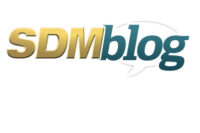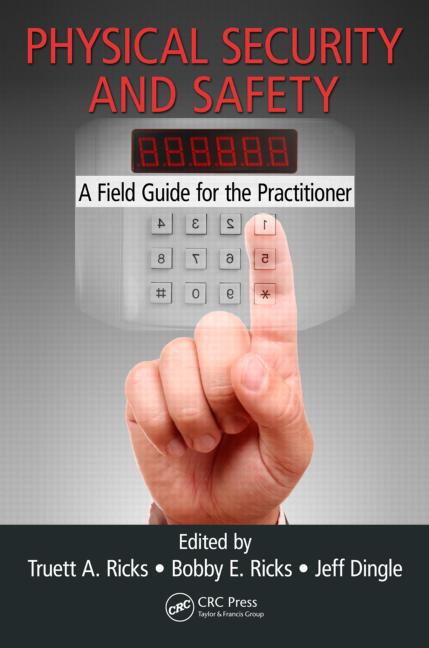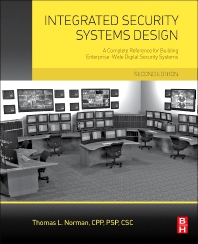The time certainly is ripe for security industry businesses that are involved in sustainability. First movers are blazing a profitable path to the sustainable future and demonstrating the value of going green to companies that are preparing to dive into what will soon be the “new normal.”
When it comes to sustainability, green attracts green. In other words, general contractors (GCs) working on green building projects are more likely to work with vendors and integrators that run sustainable businesses of their own. The shift in the number of green building projects alone is incentive enough for security businesses to make the commitment, according to Aaron Smith, director of sustainable building solutions for ASSA ABLOY, the Stockholm, Sweden-based manufacturer of intelligent lock and security systems.
“According to McGraw Hill’s 2013 Green Outlook Report, 44 percent of buildings being built in the non-residential marketplace right now are green buildings. By 2016 that is supposed to increase to 48 percent, which is nearly half of the addressable commercial market,” says Smith. (See chart below.) “Companies working in the green building marketplace also continued to grow year-over-year during the recession. You have to understand that this is real-dollar market potential.”
ASSA ABLOY’s Swedish roots have encouraged its sustainable culture, Smith says. The company participates in a Fortune 1000 global sustainability reporting initiative and publishes its carbon emissions through the United Nations Global Compact program. ASSA ABLOY also has attained its ISO 14001 Environmental Management System certification and is a Platinum Member of the United States Green Building Council (USGBC).
“The beneficial part of our USGBC membership is being at the forefront of the green building movement,” Smith says. Membership helps ASSA ABLOY stay plugged in to the pulse of the green marketplace and the voice of its customers, he adds.
Systems integrator G4S Technology Ltd., Gloucestershire, U.K. also is firmly committed to sustainability. Attention to design characteristics of its U.K. facilities have garnered the company a best-in-class rating from the U.K. Government’s Carbon Trust body, says Nick Ball, group quality manager for G4S Technology. G4S also attained its ISO 14001 certification in 2007 in the U.K. and in 2008 at its AMAG Technology subsidiary in Torrance, Calif. Subsequent EMS audits and reports have demonstrated improved environmental performance year-over-year for the company, he describes. Meanwhile, AMAG Technology has won California’s Waste Reduction Award Program for three years in a row.
All of these efforts support “the company’s sustainability agenda, in that the use of all resources, whether they be for facilities, production, products or services are limited as much as possible, with the reduce, re-use, recycle principal being at the core,” Ball says.
Tonawanda, N.Y.-based systems integrator SmartEdge is aggressively making changes to its already Energy Star-certified headquarters to obtain Silver Leadership in Energy and Environmental Design (LEED) certification for it, according to Scott Drabek, vice president and partner of SmartEdge.
SmartEdge already has implemented an energy management system that integrates card access with heating and cooling in areas of the building that are in use, or not. The company also has installed occupancy sensors in every office and room in the building and is upgrading all lighting to LEDs. Other improvements include switching out plumbing fixtures to low-flow and automated flush valves, upgrading servers to improve their energy efficiency, installing video conferencing equipment at all four offices to reduce travel, and operating paperless.
SmartEdge speaks from experience when educating about half of its clients about the ways they can increase sustainability. The remainder already has a good grasp of the rewards that going green offers, Drabek explains.
“National clients are automatically adopting sustainability and the bigger industries have made it their standard to integrate systems and do more automation,” he says. “Whether they are working on existing or new buildings, this is the kind of integration they are asking us to provide.”
Indeed, sustainability is about stakeholders inside and outside the company and listening to customers, Smith says. “You have to have stakeholder engagement built into your programs. If you are not listening to the marketplace, you may miss the noise.”
The Grass Actually Is Greener
In addition to becoming more sustainable internally, security industry manufacturers are developing innovative green products and systems that forward-looking integrators are installing. In addition to saving their customers money, green products and systems provide security companies with new applications and business opportunities.
Green security systems “really have a purpose 24 hours a day,” Drabek explains. In addition to securing the premises, they work together with energy systems to enable precise control of heating, cooling and lighting based on occupancy, load levels and more. This integration saves money and energy. In addition, distributors, integrators and manufacturers alike are using everything from recycled materials and chemical-free plastics to make new products and shipping them in recycled cartons, Drabek adds.
“LEED v4 [the recently launched, newest version of the LEED building program] is pushing life cycle assessments of products through environmental product declarations (EPDs), as well as complete materials ingredient reports through health product declarations,” Smith says. “When you do a LEED EPD, you find out that most of the impact from access control products comes from energy use during the use phase. Customers are starting to realize the energy savings and environmental impact reductions they can realize by purchasing products designed with this in mind.”
SOP = Sustainable Operating Procedures
Putting green programs and procedures in place comes naturally to some businesses, but it is easier than many might think to implement new habits that lead to solid benefits. Furthermore, LEED v4, the newest version of the LEED green building program, is pushing extended producer responsibility programs, according to Smith. Where LEED leads, sustainability follows.
“We have always been a company that has been conservation alert and that has made sure not to try and have a lot of waste,” says Matthew Ladd, president and chief operating officer at The Protection Bureau, a full-service systems integrator based in Exton, Pa. “I went to school in Vermont and was always very cautious of the environment and carried that on even in the early days.”
Ladd’s father, Keith Ladd, who founded the business nearly 40 years ago, had the same ethic from growing up in the Great Depression Era, when not much was wasted, adds Matthew. Company employees pushed The Protection Bureau to obtain its green rating from the state of Pennsylvania. The company’s CFO, office and warehouse staff, and safety committee make sure that everything that can be recycled is recycled, Ladd says.
In addition to going paperless, the company has worked hard to save gas. Improvements include installation of GPS technology that integrates with company vehicles, gas cards, and the business management system. The company also switched from commercial vans to Ford Transits, which get double the gas mileage and produce less carbon emissions.
“What’s nice about the green movement is that it’s not really a costly endeavor,” Ladd believes. “We have cut our gas bill almost in half with a lot of the procedures we have put in place.”
The Protection Bureau’s efforts to be paper-free are more recent, but have reached a point where the staff can pass an entire project around to all of the people that need to see it without using any paper. “The only thing we may need paper for is contracts, but we are trying to do some of those electronically, too. We also have to print CAD files and floor plans, but we only do a limited amount for our people in the field.”
By becoming a more sustainable business, The Protection Bureau has created more loyalty with its customers, Ladd says, explaining, “People like to work a company that gets projects done efficiently, stays organized and keeps them updated on the status. Through all of the processes we are able to do that.”
Every little bit helps. When more supply chain team members focus on sustainability, the entire process is more efficient. As a leading distributor for security products and solutions, Anixter knows that addressing sustainability throughout its processes is important for customers. With several LEED-certified warehouses, Anixter efficiently picks, packs and ships materials to help integrators drive costs out of their overall installation process. However, Anixter offers much more than traditional distribution, according to Peter Bordonaro, vice president of supply chain solutions for Anixter, Glenview, Ill.
“We work with integrators, determine their build-out schedule and then perform services such as DOA checks, firmware updates, etc. We also kit, assemble, label and package materials so they are delivered with the least amount of packaging possible, leading to improved field productivity for the integrator,” he describes.
In addition, Anixter removes and recycles any waste that would otherwise be left at the job site and provides integrators with certificates stating how much waste was minimized and recycled. These certificates help quantify how much packaging waste was diverted from landfills, which helps to obtain LEED certification.
“We help customers complete their projects on time and under budget, and we also help them meet sustainability goals which are required on more and more projects,” Bordonaro explains.
Coming Soon
Every day new laws and specifications are created for green building construction. Most of what is in place in the United States today is voluntary, but it will not be that way for long. For example, California’s CalGreen standard calls for all new residential construction to be Zero Net Energy (ZNE) or equivalent by 2020; commercial buildings must follow suit by 2030.
Green building codes on the immediate horizon for the security industry are no different from the voluntary codes that became mandatory for exit devices, life safety, security, fire safety and the American Disabilities Act, Smith explains.
The International Code Council (ICC) writes construction codes including International Green Codes that are being adopted and sometimes mandated by municipalities, counties, states and elsewhere in the world, according to Jim Sinopoli, managing principal of SmartBuildings LLC, an engineering and consulting firm based in Austin, Texas.
There is a move underway to write a second green code in which almost everything would be mandated. Organizations working on that include the American Society of Heating, Refrigeration, and Air Conditioning Engineers (ASHRE); the Illuminated Engineering Society (IES), which does the standards for lighting; and the USGBC, Sinopoli says.
For security businesses, the new green code will call for materials used to make access control, video surveillance, intrusion systems, etc. to meet ASTM standards (formerly known as the American Society for Testing and Materials), he explains.
“Everything from cameras to cables to sensors will have to be made of sustainable materials. It could be anything from paint on the cameras to the materials used for card readers,” he says. As a result, GCs will look for partners that are sensitive to the objectives of building owners involved in projects that are following mandatory International Green Code, Sinopoli adds.
In addition to codes, sustainability-related reporting programs such as the Global Reporting Initiative and CDP (formerly known as the Carbon Disclosure Project) are becoming more important to many industries and companies, according to Steve Flores, sustainability marketing specialist for Schneider Electric.
While some businesses and organizations encourage participation, others require it of companies that want to provide them with products and services. In addition to being able to win more business, reporting companies receive scores relative to their commitment to environmental, governance and social issues. Scores often are disclosed to interested stakeholders or published in annual reports, he relates.
7 Ways to Start
Businesses that do not have a sustainability program in place may wonder where to start. Matthew Ladd, president and chief operating officer of The Protection Bureau, Exton, Pa., offers a few starting points for CEOs, presidents and owners of companies who are ready to begin or improve their journeys.
- Invest in a good business management and estimating system and use those systems to generate as little paper as possible.
- Examine the efficiencies of your vehicles or fleet. Next to payroll, it is highly likely that your next biggest expense is gas. Efficient vehicles save money and time and they are better for the environment.
- Lead by example. Your company will not go paperless or save on waste if the owner is still printing everything he needs to read or does not recycle the things he uses.
- Inform your staff about the overall goals of your sustainability program. Make sure they understand that you are not trying to make them miserable or bored. Let them know you want the company to be environmentally alert and efficient.
- Always push efficiency. Every quarter hold a state-of-the-company address for all employees that concentrates on efficiencies in different areas of the business, and recognize the people who are helping to create and drive efficiencies.
- Listen to your employees. Sometimes people in the field can come up with unique ideas or perspectives that owners or executives who sit at their desks may not.
- Organize an employee-driven committee to review company processes and procedures and suggest changes and improvements that are not just change for change’s sake.












